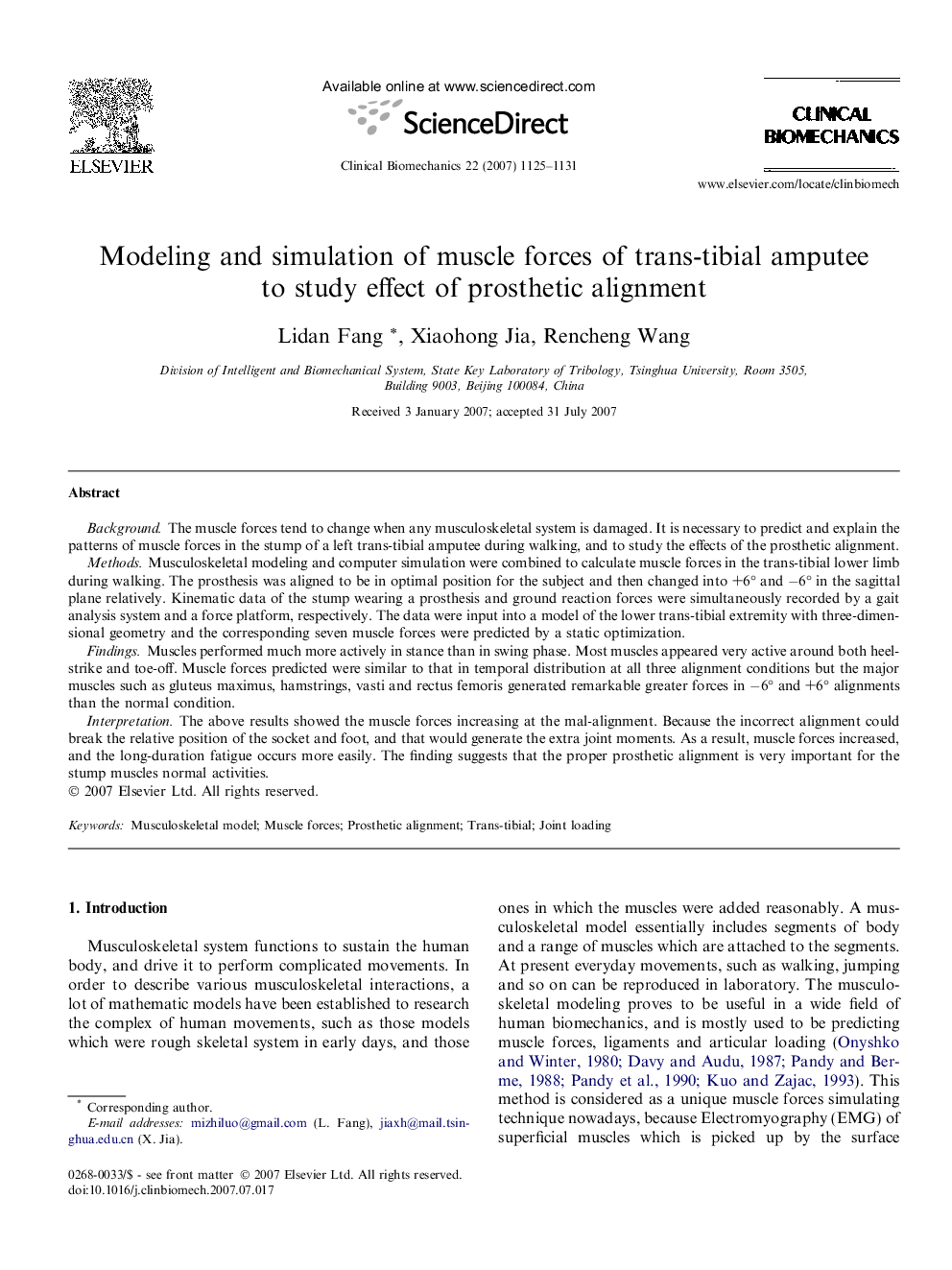| Article ID | Journal | Published Year | Pages | File Type |
|---|---|---|---|---|
| 4051727 | Clinical Biomechanics | 2007 | 7 Pages |
BackgroundThe muscle forces tend to change when any musculoskeletal system is damaged. It is necessary to predict and explain the patterns of muscle forces in the stump of a left trans-tibial amputee during walking, and to study the effects of the prosthetic alignment.MethodsMusculoskeletal modeling and computer simulation were combined to calculate muscle forces in the trans-tibial lower limb during walking. The prosthesis was aligned to be in optimal position for the subject and then changed into +6° and −6° in the sagittal plane relatively. Kinematic data of the stump wearing a prosthesis and ground reaction forces were simultaneously recorded by a gait analysis system and a force platform, respectively. The data were input into a model of the lower trans-tibial extremity with three-dimensional geometry and the corresponding seven muscle forces were predicted by a static optimization.FindingsMuscles performed much more actively in stance than in swing phase. Most muscles appeared very active around both heel-strike and toe-off. Muscle forces predicted were similar to that in temporal distribution at all three alignment conditions but the major muscles such as gluteus maximus, hamstrings, vasti and rectus femoris generated remarkable greater forces in −6° and +6° alignments than the normal condition.InterpretationThe above results showed the muscle forces increasing at the mal-alignment. Because the incorrect alignment could break the relative position of the socket and foot, and that would generate the extra joint moments. As a result, muscle forces increased, and the long-duration fatigue occurs more easily. The finding suggests that the proper prosthetic alignment is very important for the stump muscles normal activities.
